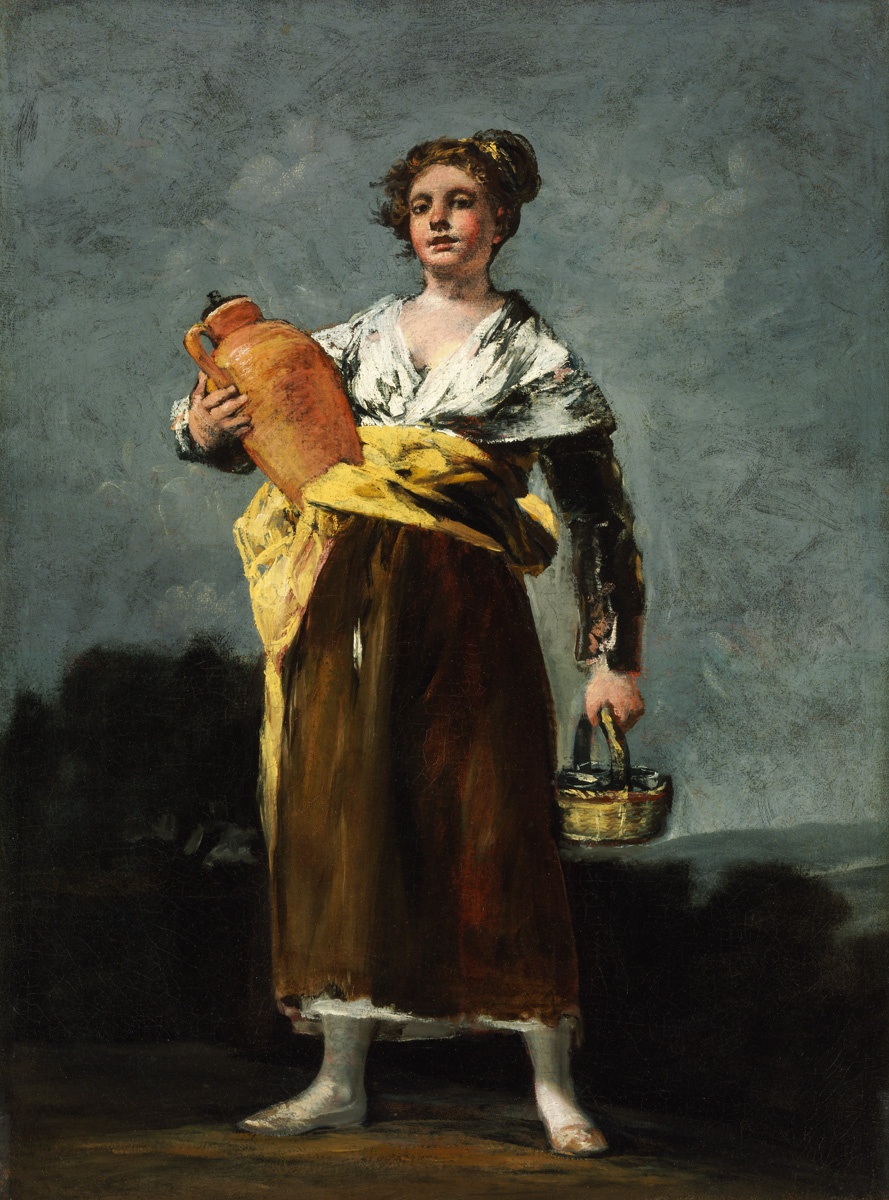Whether Goya was the last great old master or the first modern genius is a spurious dilemma: he did not straddle the border between two eras - he himself was the border. Once he was celebrated for his carefree Rococo palace decorations and grandiose portraits; the Goya admired today is rather the one who opened Pandora’s box, and for the first time set free the inner demons of the human soul and the horrors of war. The Water-carrier bears the imprint of both Goyas. At first glance it seems a simple rustic genre picture: a somewhat rough-hewn, yet ethereally charming young girl carries water and food to someone. A forerunner to this figure can be found on tapestry designs twenty years earlier, which Goya made for the Madrid court, at a moment of European optimism, when it seemed that the Enlightenment would bring general welfare. But then all hell was breaking loose and by the time the picture was made Spain had been sacked by Napoleon’s troops. The idyllic world of the tapestries had gone, and the air is charged with a surly restlessness instead. Indeed, it is war we see here: the water is needed by the nameless heroes of Zaragoza, who held up the invaders practically with their bare hands. It is not suffering that dominates here, as in the famous Disasters of War prints. With a pathos unusual for Goya, the figure of the girl is ennobled almost to the status of a memorial: a statue to the stubborn, ordinary heroism of a people seeking to set the world back on the right track. Axel Vécsey
en

